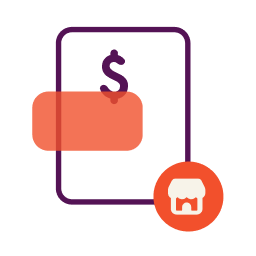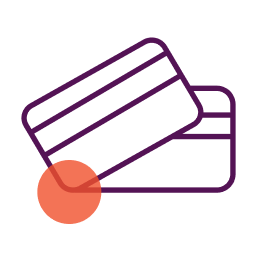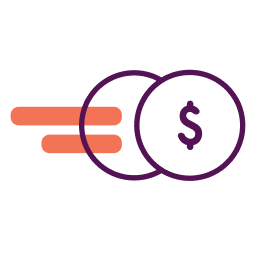It seems pretty obvious that cash is a big factor in your current and future business plans. From startup and everyday operating costs to growth and expansion costs, cash is the lifeblood of a business. Large corporate organizations and small businesses alike are required to make decisions about where and when to spend (or not to spend) money. To do this, it’s imperative that you monitor what is commonly referred to as “cash flow.”
So what is cash flow? To put it simply, cash flow is the journey of financial assets into and out of your business. Things like the sale of items and services, lines of credit, loans, or the sale of any assets can all be considered an “inflow” of cash. Business expenditures (payroll, utilities, mortgage or rental fees), business purchases (equipment, supplies), or loan repayments can all be considered “outflow.”
Sounds easy enough, right? While the concept is, in fact, one that’s fairly straightforward, how to make sense of it and create long and short-term strategies from it can often seem daunting. This is especially true for new or struggling small business owners who are often strapped for finances, and therefore, need to make the most of their cash flow.
Access personalized insights with our Cash Flow Health tool when you sign up with Nav and connect your business checking account today:
– See an instant evaluation on how you align with lender requirements– Actionable recommendations for improving your funding odds
– Enhanced cash flow tracking chart with month-over-month insights
– Charts that track revenue and spending
What Is A Cash Flow Statement?
For the reason stated above, it’s imperative that you create a cash flow statement to help you gather information about revenue and expenses over a period of time. Cash flow statements (sometimes called “statement of cash flows”) are a key document for your bookkeeping and accounting management process. It’s typically reported alongside other important financial statements, including your income statement and balance sheet. Its purpose is exactly what it sounds like: To track your cash flow. It helps you keep tabs on your finances and effectively plan for the next quarter or year to come.
Creating a Cash Flow Statement
If you understand the basic principles of balancing a checkbook, you’ll probably understand some of the basic principles behind developing a cash flow statement. Ideally, you will be looking at the change in cash (actual cash or cash equivalents) over a specific period of time.
One of the primary reasons to create a cash flow statement is to gain insight about your spending and expenses by documenting and keeping a history of cash flow on a monthly or quarterly basis.
What Are the Three Types of Cash Flows?
Cash flow statements are made up of three components:
- Operating cash flow
- Financing cash flow
- Investing cash flow
What is operating cash flow?
Operating cash flow, or cash flow from operating activities, is the part of a cash flow analysis comes from the regular ebb and flow of your business and focuses on the net income (revenue minus the cost of goods, sale of goods, operating expenses, income taxes, etc.). Also included in this portion of your cash flow analysis should be non-cash expenses such as depreciation, adjustments made for losses, gains, or amortization, and changes in all of your current assets and liabilities. Consider operations cash flow as the money that is generated internally.
What is financing cash flow?
The financial portion of your company’s cash flow statement includes items like loan or credit line obligations (repayment from borrowing money), issuing or buying back stock, and any cash dividends. Eventually, your cash flow analysis will help you determine the impact (positive or negative) of your financial actions. This will help you make more informed decisions in the months, quarters, and years to come.
What is investing cash flow?
In many ways, your business is one giant investment, but in this particular case, we’re referring to non-current assets. These are assets that will add value to your company over time, but during the current cash flow statement, their value can’t be fully realized.
When you think about what to include in the investment cash flow portion of your statement, consider things like marketing and brand recognition expenses, purchases of equipment or intellectual property, or any goodwill efforts you’ve made.
By including the three breakdowns above, you’ll be able to create a complete picture of your financial standings. Regular cash flow analysis is a vital part of staying in touch with your business and determining your next course of action.
What Is Net Cash Flow?
Net cash flow is the amount of cash you have left after subtracting your net cash outflow from your cash inflows in a given period. In simple terms, net cash flow = net cash inflow – net cash outflow. You can also calculate it as the sum of your net cash flow from your operating, financing, and investing activities.
Here’s an example. Assume your business has a positive net operating cash flow of $100,000, but a negative net operating financing cash flow of -$40,000, and a negative net operating investing cash flow of -$10,000. Your net cash flow would be:
$100,000 – $40,000 – $10,000 = $50,000
Now assume your business has a positive net operating cash flow of $100,000, but a negative net operating financing cash flow of -$80,000, and a negative net operating investing cash flow of -$30,000. Your net cash flow would be:
$100,000 – $80,000 – $30,000 = -$10,000
What Is Discounted Cash Flow?
Discounted cash flow (DCF) is a way to determine the value of your business. It estimates the value based on your expected future cash flows, i.e. how much cash your business is projected to generate.
The formula is as follows:
DCF = (CF1 / (1+r)^1)+(CF2 / (1+r)^2)+(CFN / (1+r)^N)
Where CF1 = Cash Flow for Year 1, CF2 = Cash Flow for Year 2, and CFN = Cash Flow for the final year of your analysis, and r = the discount rate (i.e. how much your cash flow is discounted in the future).
Here’s an example: Assume your small business/side project is projected to generate $10,000 in cash flow in Year 1, $15,000 in Year 2, and $20,000 in Year 3. The discount rate is 10%.
In this case, DCF = ($10,000 / (1+0.1)^1)+($15,000 / (1+0.1)^2)+($20,000 / (1+0.1)^3) = $36,514
How to Analyze Cash Flow
As the saying goes: Cash flow is the lifeblood of your business.
You may not need to have a positive cash flow to be profitable, but businesses with negative cash flows are often in poor financial health and more likely to go out of business. In light of this, watch for positive cash flow numbers on your statements. Take expected future cash flows into consideration as well. Are they projected to be positive? Equally as important: Are they projected to grow? Not having enough cash may be a red flag, not just for your finances but also for the future of your business operations.
Also consider the sources of your cash balance. Are they coming from diverse sources? If not, you may be putting yourself at risk if your sole source stops operating as you expect. Ask yourself if there are ways to start diversifying over the next few months. This could include creating new product lines, marketing to new customers, or expanding to new locations.
Another aspect to note is that a negative net cash flow from your cash flow from financing may be a positive thing, as it may indicate you aren’t selling financial assets in order to fund operations or stay afloat.
How Lenders Analyze Your Cash Flow
Lenders pay attention to your cash flow as one metric of how likely you are to be able to repay a business loan. A healthy cash flow often means you’re more likely to be able to cover the amount owed, while a negative net cash flow could mean you have a higher risk of defaulting.
Lenders often pay close attention to your operating cash flow. They want to see if you can repay the loan based on your business activities, rather than borrowing capital from investors (i.e. financing activities) or other third-party sources. The stronger your operating cash flow, the more likely your business is financially stable.
One of the best ways to find the right loan for your business is to create a Nav account. Nav syncs with your business data to show you the small business loans you’re most likely to qualify for. It saves you hours of research by showing you your best options with just a few clicks. Compare what’s available right from your dashboard, then simply click to apply.
Small business loans aren’t the only way to get working capital. Nav also shows you the business credit cards you’re most likely to get. Credit cards allow you to access capital without the strict approval requirements of most loans, and can get you cash back and other rewards on expenses you already pay. Some can even help you build your business credit scores as you pay them off.
Speaking of business credit scores — stronger credit scores can open the door to better loan options (i.e. higher loan amounts, better interest payments, and more favorable repayment terms). Your Nav account shows you exactly how to improve your scores with business credit reports, one-on-ones with specialists, tradeline reporting, and more.
Nav Makes Cash Flow Easy
Instead of getting lost in a sea of numbers, try visualizing your cash flow with Nav’s updated Cash Flow tool. When you securely connect your business bank account, you’ll get actionable insights into your business’s financial health. You can access an enhanced cash flow tracking chart that offers month-over-month insights — from your annual revenue to your average daily balance. Additionally, you’ll receive an instant evaluation of how you align with lender requirements. Nav’s new Cash Flow features can help you feel confident in knowing your next move.
Cash Flow vs. Profit
Conceptually, the calculation behind net cash flow is similar to the calculation behind net profit. However, note that they are different measurements. Net profit measures the amount of money you have left after all your expenses and debts have been paid. Net cash flow measures the amount of cash moving in and out of your business.
A business can be profitable without having a positive cash flow. Businesses at this stage may also be at risk of liquidity issues.
Need to take control of your cash flow? Sign up with Nav to better understand your business finances, so you can make smarter money decisions.
This article was originally written on October 7, 2015 and updated on January 9, 2024.




I would like to know to create a cash flow to start my business
I have an invention idea for a barbecue pit called the no burn BBQ Pit I built one about 30 years ago used it for about 25 years and it is guaranteed not to burn the meat Davison inventions was trying to help me out oh but they’re wanting too much to get it patented and get it kicked off I don’t have that kind of money I need funding